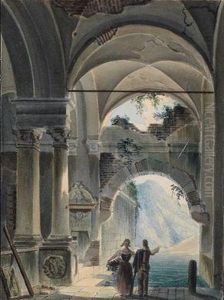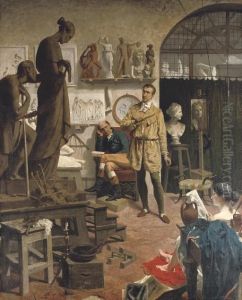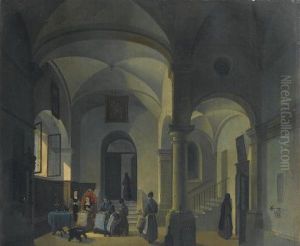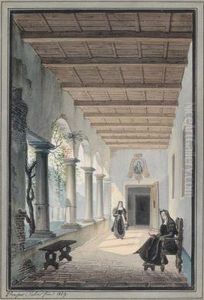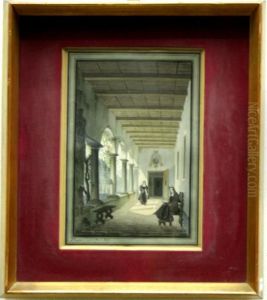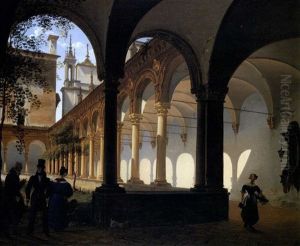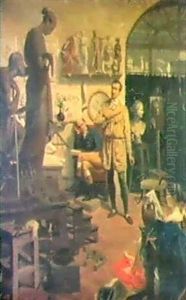Pompeo Calvi Paintings
Pompeo Calvi was an Italian sculptor born in Milan on May 2, 1806. He was a prominent figure in the Italian sculpture scene of the 19th century. Calvi showed an inclination towards art from an early age, and his talent was nurtured under the guidance of prominent teachers. He studied at the Brera Academy, one of the most prestigious art schools in Milan, where he was a pupil of the neoclassical sculptor Pompeo Marchesi. This education provided him with a solid foundation in the classical traditions of sculpture.
Calvi's work is characterized by its adherence to the neoclassical style, which was prevalent during his time. This style was heavily influenced by the art and architecture of ancient Greece and Rome, and it emphasized qualities such as harmony, clarity, and restraint. Calvi's sculptures often reflected these values, and he was known for his ability to capture the grace and serenity of his subjects.
Throughout his career, Pompeo Calvi created numerous public monuments and statues, as well as religious sculptures and portrait busts. He gained recognition for his skill in marble carving, and his works were appreciated for their technical proficiency and elegance. Some of his notable works include the monument to Cesare Beccaria in Milan and various statues in the Milan Cathedral.
Calvi participated in several exhibitions and received commissions from both private clients and public bodies. His contributions to Italian art were acknowledged in his time, and he was awarded various honors for his work. Despite his success, Calvi's name is not as widely known today as some of his contemporaries, which is often the case with artists whose work adheres closely to the prevailing styles of their time rather than breaking new ground.
Pompeo Calvi passed away on February 9, 1884, in his hometown of Milan. His legacy lives on in the sculptures he left behind, which continue to be admired for their classic beauty and craftsmanship. Through his dedication to the neoclassical style, Calvi made a lasting impact on the tradition of Italian sculpture.
